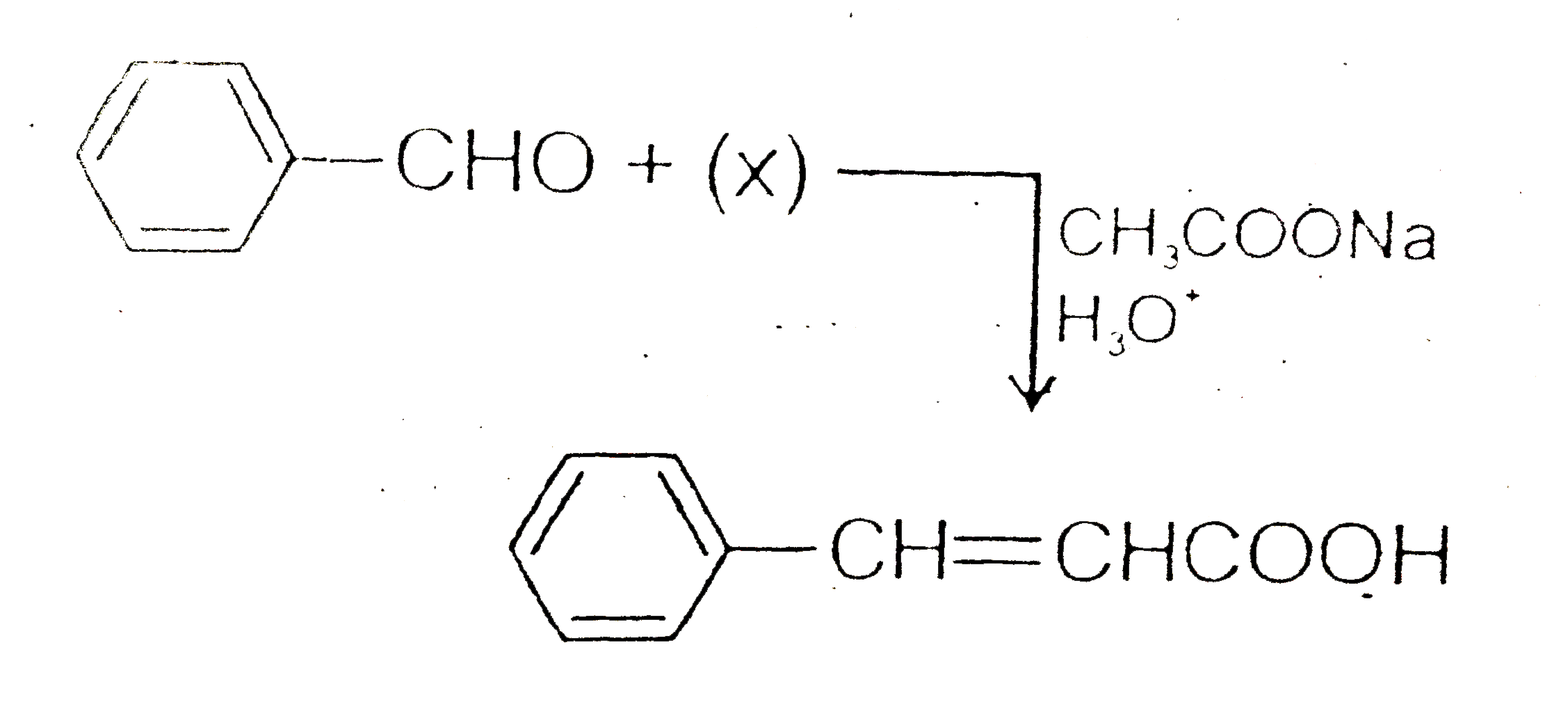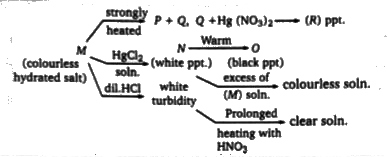
Q. Compound 'X' is:
NaNO3
Ag2C2O4
PbSO4
ZnCO3
The correct Answer is:D
Topper's Solved these Questions
- TYPES OF REACTIONSBOOK - VK JAISWAL ENGLISHCHAPTER - TYPES OF REACTIONSEXERCISE - ONE OR MORE ANSWERS IS/ARE CORRECT
40 Videos
- TYPES OF REACTIONSBOOK - VK JAISWAL ENGLISHCHAPTER - TYPES OF REACTIONSEXERCISE - MATCH THE COLUMN
14 Videos
- TYPES OF REACTIONSBOOK - VK JAISWAL ENGLISHCHAPTER - TYPES OF REACTIONSEXERCISE - LEVEL 2
196 Videos
- s-BLOCK ELEMENTSBOOK - VK JAISWAL ENGLISHCHAPTER - s-BLOCK ELEMENTSEXERCISE - SUBJECTIVE PROBLEMS
2 Videos
Similar Questions
Knowledge Check
 , The compound X is : APb(NO3)2BCaCrO4CHg(NO3)2DAgNO3
, The compound X is : APb(NO3)2BCaCrO4CHg(NO3)2DAgNO3When an oxide of manganese (P) is fused with KOH in the presence of an oxidising agent and dissolved in water, it gives a dark green solution of compound (Q). Compound (Q) disproportionates in neutral or acidic solution to give purple compound ( R) oxidises potassium iodide solution to a compound (S) and compound (P) is also formed. Compounds P to S are
A P Q R SMnO−4KIO3MnO2K2MnO4B P Q R SMnO2K2MnO4MnO−4KIO3C P Q R SMnO2MnO−4K2MnO4KIO3D P Q R SK2MnO4MnO2MnO−4KIO3
The magnetic property, dipole moment, plane of symmetry, colour and absorption band cann be helpful in structure elucidation of complex compounds:
Q. Compound 'x' has molecular formula CrCl2Br⋅6H2O can show type of isomerism.
(i) hydrate isomerism
(ii) ionization isomerism
(iii) geometrical isomerism
(iv) optical isomerism
View SolutionThe compound 'X' is

View SolutionCompound X will be :

View SolutionThree compound X, Y and Z were taken into three different laboratory vessels annd they are carried out by a chemist in his car. The car caught fire due to short circuit and the chemist came out of the car and noticed following observations:
Q. Compound X changes into white substnace along with liberation of neutral oxide and then white substnace decomposed into three products among which two are acidic oxides. among these oxides non-polar oxide can undergo polar cyclic polymer on cooling. the compound X will be:
View Solution
The compound x is
View Solution
Q. The structure of compound P is:
View Solution



